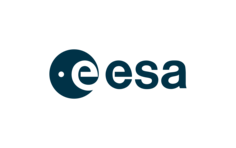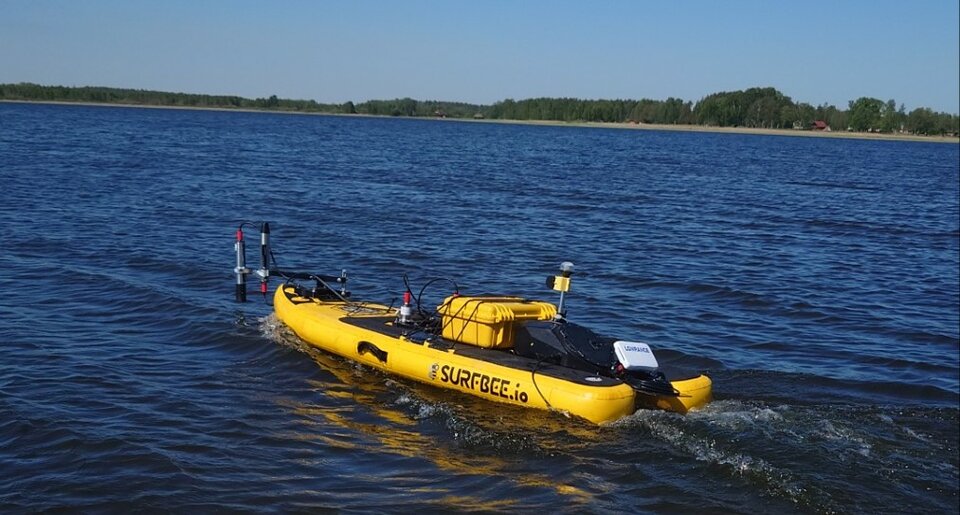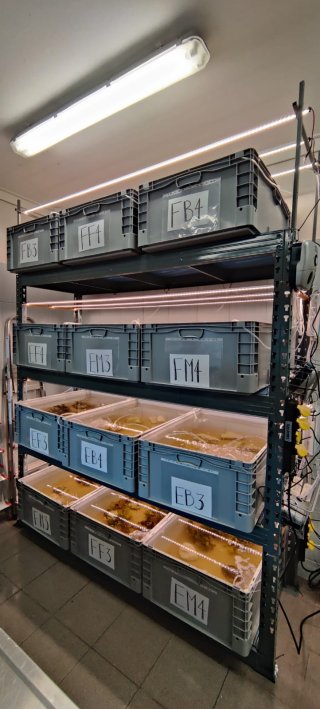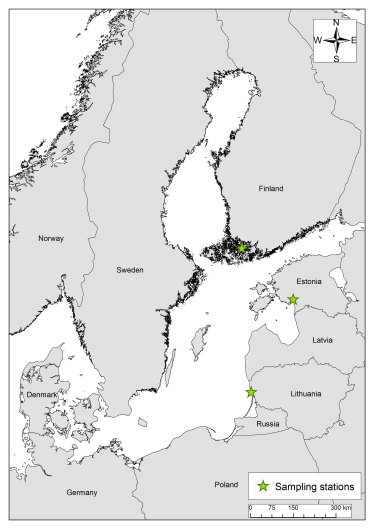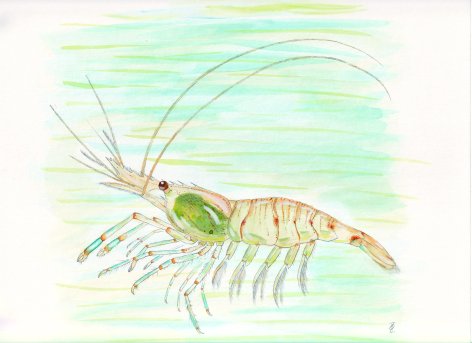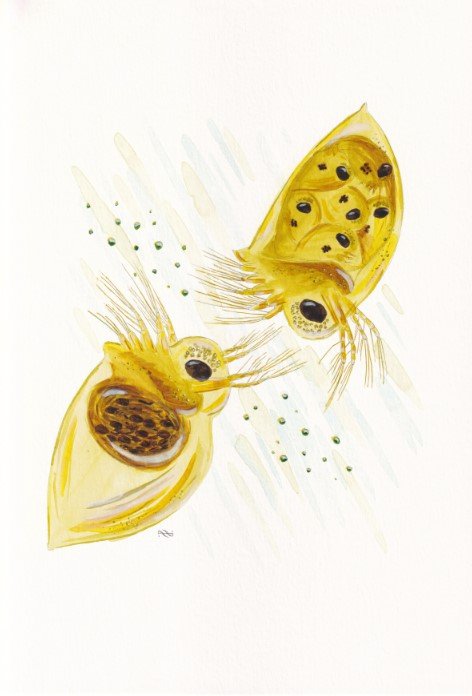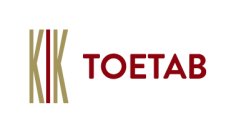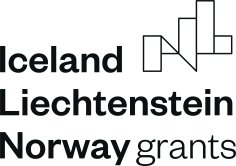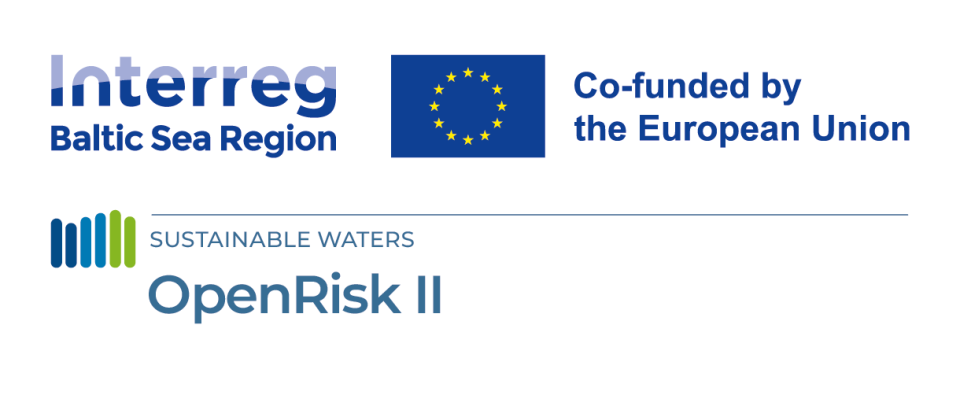Contact: Kristiina Nõomaa, kristiina.noomaa@ut.ee
Duration: 01.12.2021−31.01.2024
Project type: R&D Project
Total funding: 430 000 EUR
Information: ETIS
During the ongoing project, the impacts of invasive species were presented at various events and publications in 2022:
- A popular science programme on the potential uses of alien species: https://www.levila.ee/video/parnu-lahe-uut-mere-elanikku-soomas
- Introducing invasive species effects:
https://novaator.err.ee/1608731158/pealtnagija-eesti-peale-ihuvad-hammast-pesukarud-ja-nahtamatu-seen
https://novaator.err.ee/1608815383/uuring-voorliikide-moju-laanemerele-on-vorreldav-kliimamuutustega
- In order to improve the methodology for assessing the distribution potential of the Harris mud crab (Rhithropanopeus harrisii), additional distribution data collection was started in the summer of 2022 (observations of local residents) and information on the alien species and its impacts was shared with the public:
ENG: Raport Harris mud crab sighting here.
Oral presentations at international conferences and meetings:
- Kotta, J.; Ojaveer, H.; Fetissov, M.; Orav-Kotta, H.; Lees, L.; Kõivupuu, A.; Szava-Kovats, R. 2022. Integrating ecological impacts of non-indigenous species within a cumulative effect assessment framework. NEOBIOTA 2022, 12th International Conference on Biological Invasions, Biological Invasions in a Changing World, Tartu, Estonia, 12–16 September 2022.
- Nõomaa, K.; Kotta, J.; Szava-Kovats, R.;: Herkül, K.; Eschbaum, R.; Vetemaa, M. 2022. Novel fish predator causes sustained changes in its prey populations. NEOBIOTA 2022, 12th International Conference on Biological Invasions, Biological Invasions in a Changing World, Tartu, Estonia, 12–16 September 2022
- Beleem, IB; Kotta, J.; Barboza FR. 2022. Temperature modulates the community-wide effects of an invasive mud crab in a key baltic sea macroalgal-dominated habitat. NEOBIOTA 2022, 12th International Conference on Biological Invasions, Biological Invasions in a Changing World, Tartu, Estonia, 12–16 September 2022
- Nõomaa, K. 2022. Round goby long-term impact on benthic communities. Presentaion at the Workshop on Stickleback and Round Goby in the Baltic Sea (WKSTARGATE). 22–25 august 2022
- Nõomaa, K. 2022. Understanding marine invasions - from the lab to the sea. Ettekanne konverentsil "Eesti Mereteadus 2022". 14. oktoober 2022
So far, during the project, two scientific articles have been published. The first is assessing the impact of round goby on the benthic communities of the Estonian coastal sea and the second is assessing the impact of alien species on ecosystem services:
- Nõomaa, K.; Kotta, J.; Szava-Kovats, R.; Herkül, K.; Hubel, K.; Eschbaum, R.; Vetemaa, M. 2022. Novel fish predator causes sustained changes in its prey populations. Frontiers in Marine Science, 9, 849878.
Ecosystems are simultaneously regulated by bottom-up (resources) and top-down forces (predators). However, because predator-prey interactions operate on spatial scales beyond the reach of manipulative experimentation, the actual roles of predators remain poorly understood. In ecosystems where predators are naturally absent, biological invasions provide a unique experiment to shed light on the large-scale and long-term effects of predators in the recipient ecosystem. We combined data from long-term benthic monitoring, environmental conditions, and a census of round goby population to identify changes in the dominant benthic bivalve population (Mytilus trossulus and Macoma balthica) following round goby (Neogobius melanostomus) invasion. This study demonstrates a substantial change in the food web, with earlier primarily bottom-up regulated communities facing strong top-down control effects. The introduction of a novel predator to a species-poor ecosystem substantially reduced dominant invertebrate populations in a large part of the study area, sometimes with a time lag of 1−3 years. In general, the effects were less in high productivity areas. In some cases, community recovery was observed but rarely to pre-invasion levels, raising the question of the ability of bivalve communities to act as a natural filter. This study demonstrates long-term trends in benthic communities and by excluding possible effects due to the changing environment provides more evidence that invasive species transform coastal ecosystems over time and space.
- Ojaveer, H., Einberg, H., Lehtiniemi, M., Outinen, O., Zaiko, A., Jelmert, A. and Kotta, J., 2023. Quantifying impacts of human pressures on ecosystem services: Effects of widespread non-indigenous species in the Baltic Sea. Science of The Total Environment, 858, p.159975.
In collaboration with the project's partner Anders Jelmert (IMR), a scientific article was published on the impact of alien species on ecosystem services. Ecosystem services (ES) are the benefits natural ecosystems provide to society, such as food provisioning, water supply, climate regulation and recreational benefits. Biological invasions are a major driver of global change, and several non-indigenous species (NIS) may alter key ecological feedbacks with ultimate consequences to ES, livelihoods and human wellbeing. Nonetheless, the effects of NIS on ES supply remain largely unquantified. Here we present the first quantitative case study assessing the impacts of widespread NIS on ES in the Baltic Sea, by developing and employing a robust and repeatable data-driven approach. All NIS with a sufficient knowledge base pose large and highly significant effects on ES, resulting on average 55 % change in the intensity of ES. Most impacts affected regulation services, concerning both abiotic and biotic realms, with little evidence on cultural and provisioning services. The methodology can be easily employed beyond the current study realm e.g. to better understand the roles of human pressures on ES in any ecosystem. Importantly, the study also identified major biases not only in the availability of taxonomic and sub-regional evidence, but also in the different study types employed to create the evidence base.
Ongoing work and activities
- Studies and experiments on the common horseshoe crab (Rhithropanopeus harrisii)
In 2022, experiments were carried out to assess the differences in habitat preference and impacts on native Fucus vesiculosus communities of different subpopulations of the Harris mud crab (Rhithropanopeus harrisii) (Figure 1). Samples were collected from Estonia, Finland and Lithuania to identify genetic differences between subpopulations (Figure 2).
Figure 1. Experimental units to assess the ecosystem effects of subpopulations of the migratory crab in the Kõiguste field station.
Figure 2. Locations for genetics sampling of the Harris mud crab individuals in 2022.
In 2023, the laboratory analysis of the experimental and genetics samples will continue with specimens from subpopulations.
2. Writing a children's book on alien species
The production of a children's book on alien species is on track. The texts are in the final stages of preparation and the illustrations have been completed by Lennart Lennuk, zoologist at the Estonian Museum of Natural History (Figure 3, Figure 4).
Figure 3. Grass prawn (Palaemon elegans). Author: Lennart Lennuk
Figure 4. Below the invasive species Evadne anonyx and above the native species Evadne nordmanni. Author: Lennart Lennuk
3. Assessing the CO2 sequestration potential of coastal marine habitats and restoring them.
In 2022, fieldwork and sampling were carried out to determine the carbon content of seabed vegetation communities. Samples were collected from seagrass communities (Prangli, Väinameri, Gulf of Riga) as well as from other higher plant communities. The carbon content was separately determined in the soil part of the assemblage and in the water column. The collected samples are currently being analysed. In the spring, additional samples will be collected from the same communities to get a seasonal aspect. In summer 2022, an experiment was carried out on the south coast of the island of Prangli to restore seagrass communities (Figure 5). For this purpose, eelgrass planting material was collected from a few kilometres away and eelgrass plants were planted in three different locations. In autumn 2022, a first series of observations was carried out - all sites had the planting material intact.
Figure 5: Eelgrass (Zostera marina) restoration experiment in 2022 near the island of Prangli.
Next fieldworks are planned for May 2023.




